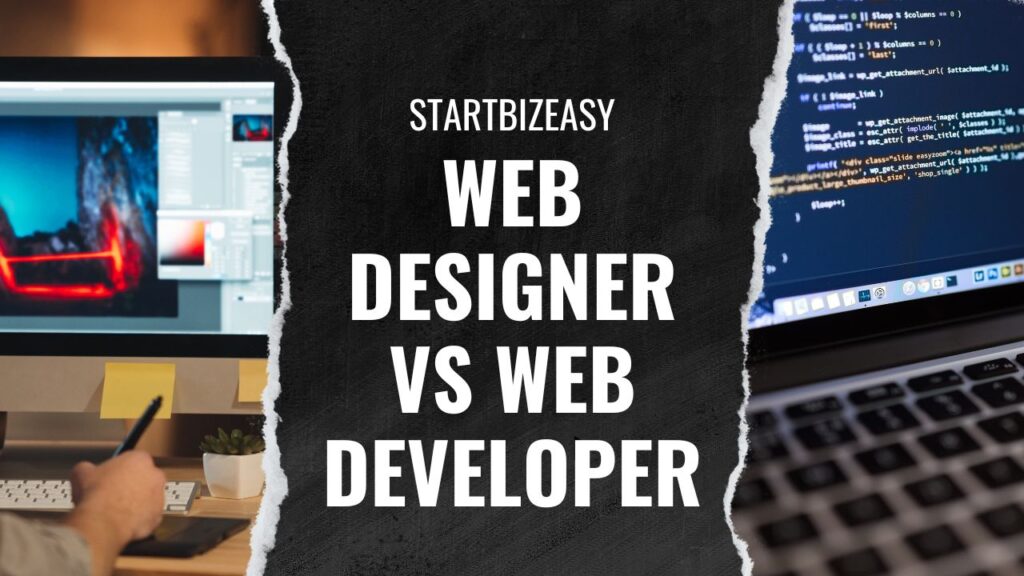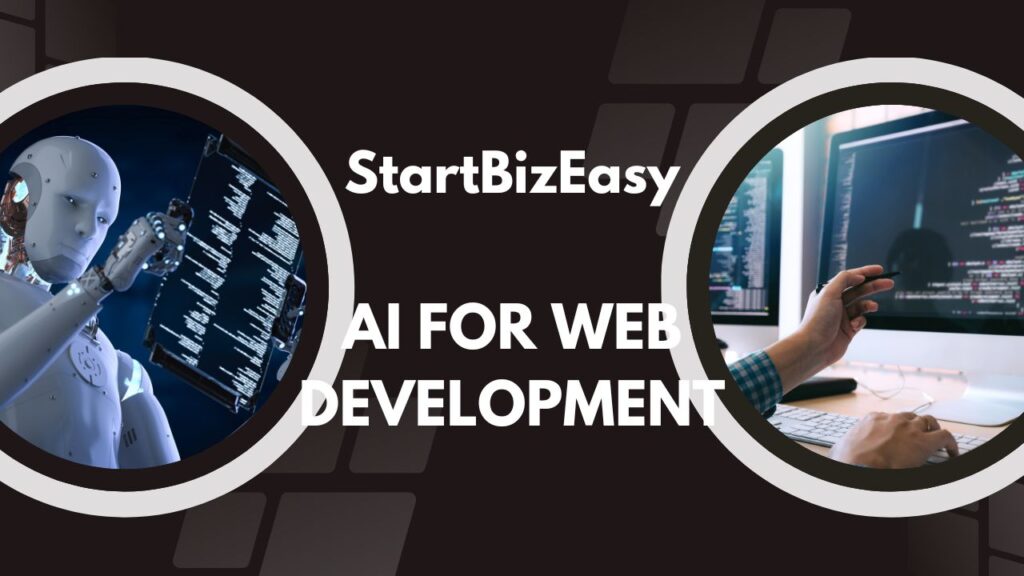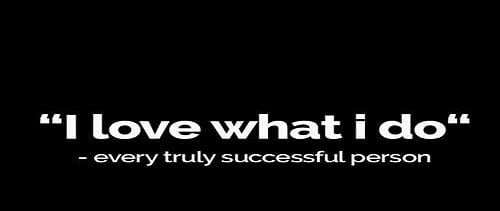
A web developer is someone who builds and maintains websites and web applications. They use programming languages like HTML, CSS, and JavaScript as well as frameworks and libraries like React, Angular, or Vue.js to create the structure, design, and functionality of websites.
Web developers may specialize in front-end development, focusing on the user interface and client-side interaction, or back-end development, working with servers, databases, and application logic.
Additionally, some web developers choose to work on both front-end and back-end aspects, known as full-stack development. Their role involves translating designs into code, ensuring websites are responsive and user-friendly, and troubleshooting technical issues.
Here is how to become a web Developer:
Table of Contents
1. Learn the Basics:
Learning the basics of web development involves understanding three essential components: HTML, CSS, and JavaScript.
HTML (HyperText Markup Language) is like the skeleton of a webpage. It provides the structure and content, defining elements such as headings, paragraphs, images, and links. Without HTML, web pages wouldn’t have any structure or meaning.
CSS, short for Cascading Style Sheets, is what gives web pages their style and appearance. It’s like the clothing and makeup of the webpage, allowing you to customize colors, fonts, spacing, and layout. With CSS, you can make your webpage look visually appealing and ensure it’s user-friendly.
JavaScript is the programming language of the web. It adds interactivity and dynamic functionality to web pages, making them more engaging and responsive. With JavaScript, you can create interactive features like dropdown menus, slideshows, form validations, and much more.
To learn these basics, beginners can explore a variety of resources such as online courses, tutorials, documentation, books, and interactive coding platforms. These resources provide structured learning paths and hands-on exercises to help beginners grasp foundational concepts and develop their skills in web development.
Through practice and experimentation, beginners can gradually build proficiency and confidence in using HTML, CSS, and JavaScript to create functional and visually appealing websites.
2. Choose a Specialization:
When it comes to web development, there are different areas/types you can specialize in:
- Front-end Development: Front-end developers focus on creating the user interface and experience of a website. This involves working with HTML, CSS, and JavaScript to design and implement the visual aspects of web pages that users interact with directly in their browsers.
- Back-end Development: Back-end developers deal with the server-side of web development. They work with databases, server-side languages (such as Node.js, Python, Ruby, etc.), and frameworks to build the logic and functionality that powers the behind-the-scenes of a website. This includes handling data, user authentication, and server operations.
- Full-stack Development: Full-stack developers are proficient in both front-end and back-end development. They have a broad understanding of how the entire web development process works, from designing user interfaces to managing server operations. Full-stack developers can work on all aspects of a web application, making them versatile and able to handle projects from start to finish.
When choosing a specialization, it’s important to consider your interests, strengths, and career goals. If you enjoy creating visually appealing interfaces and focusing on user experience, front-end development might be a good fit for you. On the other hand, if you prefer working with databases and building the logic behind web applications, back-end development could be more suitable.
In addition to that, Becoming proficient in frameworks and libraries such as React, Angular, Vue.js, and jQuery can greatly enhance a web developer’s capabilities.
Frameworks, like React, Angular, and Vue.js, provide developers with structured tools and conventions to streamline the development process. For instance, React’s component-based architecture allows developers to create reusable UI components, resulting in modular and maintainable codebases.
Angular offers features like dependency injection and two-way data binding, simplifying tasks such as data management and DOM manipulation.
Vue.js, known for its simplicity and flexibility, provides reactive data binding and a rich ecosystem of plugins for building interactive user interfaces.
Libraries, such as jQuery, offer reusable code snippets and utilities to simplify common tasks in web development. For example, jQuery provides methods for DOM traversal and manipulation, event handling, and AJAX requests, allowing developers to write concise and efficient code.
By leveraging these libraries, developers can achieve complex functionalities with less code and effort, saving time and improving productivity.
Overall, gaining proficiency in frameworks and libraries empowers web developers to build robust, feature-rich applications more efficiently. These tools provide developers with the means to tackle complex challenges, maintain code quality, and stay competitive in the ever-evolving landscape of web development.
Once you’ve decided on a specialization, focus on mastering the relevant skills and technologies associated with that area. This involve taking specialized courses, working on projects that align with your chosen specialization, and staying updated on industry trends and best practices.
By honing your skills in your chosen area of specialization, you’ll be better equipped to pursue career opportunities and excel in the field of web development.
3. Get Educated:
When delving into web development education, there are various avenues to explore. Online tutorials offer flexibility and accessibility, with platforms like freeCodeCamp and Codecademy providing free and structured courses covering HTML, CSS, JavaScript, and more.
If you prefer immersive learning, coding bootcamps like Developers.Institute, Andela, Moat Academy or Ahyoxsoft Technology offer intensive programs with hands-on experience and career support. Community colleges often provide classroom-based courses in web development as part of their computer science or IT programs, offering a cost-effective option for foundational knowledge.
Alternatively, pursuing a degree in computer science from a university provides a comprehensive education covering various aspects of computing, including web development.
This path will lead to advanced specialization or research opportunities. Consider your learning style, career goals, and available resources when choosing the educational path that best suits you in becoming a web developer.
Also know that understanding databases and servers is essential for creating dynamic and interactive web applications.
Databases serve as the storage and management systems for the data that applications rely on. There are different types of databases, such as relational databases like MySQL and PostgreSQL, and NoSQL databases like MongoDB and Firebase.
Relational databases organize data into tables with rows and columns, using structured query language (SQL) for querying and manipulation. NoSQL databases, on the other hand, offer more flexibility and scalability, handling unstructured or semi-structured data efficiently.
Servers play a crucial role in handling client requests, processing data, and generating dynamic responses. Server-side technologies like Node.js, PHP, Python (with frameworks like Django or Flask), and Ruby (with Ruby on Rails) enable developers to build the logic and functionality of web applications.
Node.js, for example, is a popular server-side JavaScript runtime known for its scalability and efficiency in building real-time applications.
By learning about databases and servers, developers can design and implement database schemas, perform CRUD operations (Create, Read, Update, Delete) on database records, and handle tasks like user authentication and data validation on the server side. They can also implement APIs to facilitate communication between the front-end and back-end components of web applications.
Overall, mastering databases and servers empowers developers to build robust, scalable, and interactive web applications that meet the needs of users and businesses alike.
4. Build Projects and Create a Portfolio:
Building projects is a crucial aspect of becoming a proficient web developer. By working on personal or open-source projects, you gain invaluable experience and skills that enhance your abilities and make you more attractive to potential employers.
When you build projects, you’re not just applying theoretical knowledge; you’re solving real-world problems and challenges. This hands-on experience helps you deepen your understanding of web development concepts and develop essential problem-solving skills.
Moreover, projects serve as tangible evidence of your capabilities. By showcasing your projects in a portfolio, you can demonstrate your skills, creativity, and expertise to potential employers or clients. A well-curated portfolio is often the key to securing job opportunities or freelance gigs in the competitive field of web development.
Working on projects also provides opportunities for collaboration and networking. Whether you’re contributing to open-source projects or collaborating with other developers on team projects, you have the chance to learn from others, gain diverse perspectives, and expand your professional network.
Ultimately, building projects is not just about completing tasks; it’s about continuous learning and growth as a web developer. Each project you undertake helps you improve your skills, tackle new challenges, and move closer to achieving your goals in the field of web development.
5. Apply for Jobs or Freelance Work:
Once you’ve honed your web development skills and built a solid portfolio, it’s time to take the next step: applying for jobs or freelance work.
For entry-level positions as a web developer, start by browsing job boards, company websites, and online platforms like LinkedIn or Indeed. Look for job postings that match your skills, interests, and career goals. Tailor your resume and cover letter to highlight relevant experiences, projects, and skills that demonstrate your qualifications for the position.
In addition to traditional employment opportunities, consider exploring freelance gigs or contract work. Websites like Upwork, Freelancer, and Fiverr offer platforms where you can showcase your skills, bid on projects, and connect with clients looking for web development services. Freelancing can provide valuable experience, flexibility, and the opportunity to work on a variety of projects.
It’s important to keep in mind that rejection is a normal part of the job search process. Don’t be discouraged by rejections; instead, use them as learning opportunities to identify areas for improvement and refine your approach. Keep honing your skills, expanding your portfolio, and networking with other professionals in the industry.
Continuously seek feedback on your work, whether it’s from mentors, peers, or potential employers. Use constructive criticism to refine your skills and improve the quality of your portfolio. As you gain more experience and expertise, you’ll become more competitive in the job market and increase your chances of landing your desired role as a web developer.
Ultimately, persistence, resilience, and a proactive attitude are key to success in the job search process. Keep applying, keep learning, and keep growing as a web developer, and you’ll eventually find the right opportunity to kickstart your career in the field.
6. Continuous Learning and Stay Updated:
Continuously improving your skills and knowledge as a web developer is essential for staying relevant in a rapidly evolving field and achieving long-term success.
Keeping up with the latest technologies and best practices ensures that you remain competitive in the job market and can adapt to changing requirements.
By continuously learning and expanding your skill set, you can explore new areas of interest within web development, such as front-end, back-end, or full-stack development, as well as emerging technologies like Machine Learning and Artificial Intelligence (AI).
Taking online courses, reading books and technical articles, and seeking feedback from peers are all effective ways to enhance your skills and knowledge.
Online courses offer flexibility and convenience, allowing you to learn at your own pace and on your schedule. Books provide in-depth insights and knowledge that may not be available in online courses, while technical articles and documentation offer practical guidance and reference materials for specific technologies and frameworks.
Collaborating with other web developers, participating in coding communities, and seeking feedback on your code and projects can help identify areas for improvement, clarify concepts, and provide alternative perspectives on problem-solving approaches.
By continuously seeking opportunities to improve and staying updated with the industry trends, you can increase your productivity and efficiency as a web developer, solve complex problems more effectively, and position yourself for long-term success in the dynamic field of web development.
Web designer vs Web developer

The roles of web designer and web developer are related but distinct in the field of web development:
- Web Designer: A web designer focuses on the visual aesthetics and user experience of a website. They are responsible for designing the layout, color scheme, typography, and overall look and feel of a website. Web designers often use graphic design tools like Adobe Photoshop, Illustrator, or Sketch to create mockups and prototypes of web pages. They may also have knowledge of user interface (UI) design principles, user experience (UX) design, and usability testing to ensure that the website is visually appealing and easy to navigate for users.
- Web Developer: A web developer, on the other hand, is responsible for building the functionality and interactivity of a website. They use programming languages like HTML, CSS, and JavaScript to implement the design created by the web designer and make the website functional. Web developers may specialize in front-end development, back-end development, or full-stack development, depending on their expertise and interests. Front-end developers focus on the client-side of web development, handling the user interface and user experience aspects of a website, while back-end developers work on the server-side, managing databases, server operations, and business logic. Full-stack developers are proficient in both front-end and back-end development, allowing them to work on all aspects of a web application.
In summary, while web designers focus on creating visually appealing and user-friendly designs for websites, web developers are responsible for implementing those designs and making them functional. Both roles are essential in the web development process, and collaboration between designers and developers is often necessary to create successful and effective websites.
Is Cyber Security also part of Web Development?
Cybersecurity is an important consideration in web development, but it is not typically a core component of the discipline. While web developers may not specialize in cybersecurity, they are responsible for implementing security best practices to protect websites and web applications from cyber threats.
Web developers need to be aware of common security vulnerabilities such as SQL injection, cross-site scripting (XSS), cross-site request forgery (CSRF), and others. They should follow secure coding practices, validate user input, sanitize data, use secure authentication mechanisms, and implement proper access controls to prevent unauthorized access to sensitive data and functionality.
In addition, web developers may work closely with cybersecurity professionals or teams to address security concerns and ensure that websites and web applications comply with security standards and regulations. Collaborating with cybersecurity experts will help identify and mitigate potential security risks throughout the development process.
While cybersecurity is not typically considered a core aspect of web development, it is essential for developers to understand and prioritize security considerations to build secure and resilient web solutions.
Due to the critical nature of cybersecurity in web development and the higher salaries typically offered to cybersecurity professionals compared to web developers, numerous web developers opt to broaden their expertise by mastering cybersecurity principles and techniques.
“Having knowledge of cybersecurity can enhance your abilities as a web developer and make you more valuable in the industry”.
In the United States, for example, the average salary for cybersecurity professionals ranges from approximately $80,000 to $150,000 per year, with higher salaries for those in more senior positions or with specialized skills.
The average salary for cybersecurity professionals in Nigeria ranges from approximately 2,000,000 to 6,000,000 Nigerian Naira (NGN) per year. -However, these figures vary significantly based on factors such as location (e.g., Lagos, Abuja), industry (e.g., banking, telecommunications, government), and your level of cybersecurity expertise.
While, the average salary for web developers in the United States, ranges from approximately $50,000 to $110,000 per year. However, salaries can be higher in tech hubs like San Francisco, New York City, or Seattle, and lower in areas with a lower cost of living.
The average salary for web developers in Nigeria ranges from approximately 1,000,000 to 5,000,000 Nigerian Naira (NGN) per year. However, these figures vary significantly based on factors such as the city (e.g., Lagos, Abuja), the industry (e.g., tech, finance, e-commerce), and the demand for web development expertise in the local market.
I suppose you now understand why web developers and cybersecurity professionals in Africa often prioritize seeking employment with foreign companies, whether full-time or as freelancers.
AI for web development

Artificial intelligence (AI) is making significant strides in revolutionizing the landscape of web development. Its applications span various domains, offering innovative solutions and transforming user experiences.
In personalized content delivery, AI algorithms analyze user behavior and preferences, facilitating tailored recommendations and content suggestions. For instance, e-commerce platforms leverage AI to provide personalized product recommendations, while news websites use it to curate content based on individual interests.
Another prominent application is the integration of AI-driven chatbots and virtual assistants for instant customer support and assistance. These bots employ natural language processing (NLP) algorithms to comprehend user queries and deliver relevant responses, enhancing user engagement and satisfaction.
Moreover, AI tools streamline content creation and curation processes. They can generate blog post ideas, summarize articles, or even design basic website layouts based on user input, thereby saving time and effort for developers and content creators.
In website optimization, AI plays a crucial role in automated testing and optimization. By analyzing performance data and user feedback, AI algorithms identify areas for improvement and automatically optimize website elements such as layout, design, and content. This not only enhances user experience but also boosts website efficiency.
Furthermore, AI-powered predictive analytics tools leverage historical data to forecast future trends and user behavior. These insights enable developers to make data-driven decisions, optimize website strategies, and enhance overall performance, leading to better engagement and conversion rates.
With the rise of voice-controlled devices, AI is also shaping voice search optimization. By analyzing natural language queries, AI algorithms optimize website content to improve visibility and ranking in voice search results, catering to the evolving preferences of users.
While AI is advancing rapidly and automating many tasks in various fields, it’s unlikely to completely replace web developers in the foreseeable future. Web development involves a combination of technical skills, creativity, problem-solving, and human judgment that are challenging for AI to replicate entirely.
AI can automate certain repetitive tasks in web development, such as code generation, automated testing, and content management. However, many aspects of web development require human input and oversight. For example, designing user interfaces that are intuitive and visually appealing often requires human creativity and understanding of user needs.
Furthermore, web development is not just about writing code; it also involves understanding client requirements, communication, collaboration, and problem-solving. These soft skills are essential for delivering successful web projects and are not easily replaced by AI.
While AI may continue to assist web developers by automating certain tasks and providing insights, human developers will remain critical for designing, building, and maintaining complex web applications. Additionally, the rapid evolution of technology means that web developers will need to continually adapt and learn new skills to stay relevant in the field.
In summary, AI is reshaping web development by offering opportunities for innovation and efficiency. Its integration enables developers to create more personalized, efficient, and engaging web experiences, ultimately driving enhanced user satisfaction and business success.
IDE (Integrated Development Environment) for Web Development
When it comes to choosing an IDE (Integrated Development Environment) for web development, there are several popular options available, each with its own set of features and advantages. Here are a few IDEs commonly used by web developers:
- Visual Studio Code (VS Code): Developed by Microsoft, Visual Studio Code is a lightweight, highly customizable IDE that supports a wide range of programming languages, including HTML, CSS, JavaScript, and popular frameworks like React and Angular. It offers features such as syntax highlighting, code completion, debugging, and built-in Git integration. VS Code also has a vast ecosystem of extensions that allow developers to tailor their environment to their specific needs.
- Sublime Text: Sublime Text is another popular choice among web developers for its speed, simplicity, and extensive plugin ecosystem. It offers features such as multiple selections, split editing, and a distraction-free mode. Sublime Text is highly customizable and supports various programming languages and frameworks, making it suitable for web development projects of all sizes.
- Atom: Atom is an open-source text editor developed by GitHub. It boasts a sleek and modern interface, with features like a built-in package manager, smart autocompletion, and extensive customization options. Atom is particularly well-suited for collaboration, thanks to its integration with GitHub and real-time collaboration plugins.
- Brackets: Brackets is a lightweight and fast IDE specifically designed for web development. Developed by Adobe, Brackets offers features like live preview, inline editing, and preprocessor support (e.g., for Sass and Less). It also has a robust extension ecosystem, allowing developers to enhance their workflow with additional functionality.
- WebStorm: WebStorm is a powerful IDE from JetBrains tailored specifically for web development. It offers advanced features such as intelligent code completion, refactoring tools, and integrated version control. WebStorm provides comprehensive support for popular frameworks and technologies, making it an excellent choice for professional web developers working on complex projects.
Ultimately, the best IDE for web development depends on your personal preferences, workflow, and project requirements. It’s a good idea to try out a few different options and see which one feels most comfortable and productive for you. Many IDEs offer free trials or are completely free to use, so you can experiment with different tools without committing to a purchase upfront.
Programming Language for Web Development
For web development, several programming languages are commonly used to build websites and web applications. Here are some of the most popular programming languages in web development:
- HTML (Hypertext Markup Language): HTML is the standard markup language used to create the structure and content of web pages. It defines the layout, text, images, links, and other elements of a webpage. HTML is essential for creating the basic structure of a website and is typically combined with CSS and JavaScript for styling and interactivity.
- CSS (Cascading Style Sheets): CSS is used to style and format the visual presentation of HTML elements on a webpage. It allows developers to control aspects such as layout, colors, fonts, and spacing, making websites visually appealing and user-friendly. CSS can be embedded directly into HTML documents or included in separate CSS files for better organization and maintainability.
- JavaScript: JavaScript is a versatile programming language used for adding interactivity, dynamic behavior, and functionality to web pages. It enables developers to create interactive features such as animations, form validation, interactive maps, and dynamic content updates without needing to reload the entire webpage. JavaScript is supported by all modern web browsers and is essential for building interactive web applications.
- Python: Python is a high-level programming language known for its simplicity, readability, and versatility. It is widely used in web development for building web applications, web frameworks, and server-side scripting. Popular web frameworks and libraries for Python include Django, Flask, and Pyramid, which provide tools and libraries for rapid development of web applications.
- JavaScript Frameworks and Libraries: In addition to plain JavaScript, many developers use JavaScript frameworks and libraries to streamline web development and build complex, interactive web applications more efficiently. Some popular JavaScript frameworks and libraries include React.js, AngularJS, Vue.js, and jQuery, each offering unique features and capabilities for front-end development.
- PHP: PHP is a server-side scripting language used for developing dynamic web applications and websites. It is particularly well-suited for building content management systems (CMS), e-commerce platforms, and web applications that interact with databases. Popular PHP frameworks include Laravel, Symfony, and CodeIgniter, which provide tools and libraries for building robust and scalable web applications.
Other well-known and widely used programming languages include C, C++, C#, Ruby, Swift, and Go, among others. These languages have large developer communities, extensive documentation, and robust ecosystems of libraries, frameworks, and tools to support software development.
These are just a few of the programming languages commonly used in web development. The choice of programming language depends on factors such as project requirements, developer preferences, and the specific needs of the website or web application being developed.
How Long does it take to Become a Web Developer?
Generally speaking, it may take anywhere from six months to two years to acquire the necessary skills and experience to work as a proficient web developer. Some people may be able to achieve this goal more quickly with intensive study and practice, while others may take longer if they are learning part-time or starting from scratch without any prior coding experience.
It’s important to recognize that becoming a web developer is a journey that involves continuous learning and growth. Even after starting a career as a web developer, professionals in this field often continue to expand their skills and adapt to new technologies throughout their careers.
Ultimately, the time it takes to become a web developer can vary from person to person, and there is no one-size-fits-all answer.
But to become a web developer quickly, it’s essential to adopt a focused and immersive approach to learning.
Firstly, set clear goals. Define what type of web developer you want to become (front-end, back-end, or full-stack) and identify the specific skills and technologies you need to learn.
Next, immerse yourself in learning. Dedicate focused blocks of time to study and practice web development each day. Create a structured study plan and commit to consistent learning sessions.
Work on real projects to apply what you’ve learned. Building projects not only reinforces your understanding but also helps you develop problem-solving skills and gain practical experience.
Seek mentorship and guidance from experienced developers. Join coding communities, online forums, or mentorship programs where you can receive feedback, advice, and support from others in the field.
Focus on mastering high-impact technologies and frameworks that are widely used in the industry. Prioritize learning languages like HTML, CSS, JavaScript, and popular frameworks like React.js or Node.js.
Stay motivated and persistent throughout your learning journey. Set achievable milestones, celebrate your progress, and stay focused on your goals, even when faced with challenges or setbacks.
Remember that becoming a web developer requires dedication, patience, resilience, and continuous learning.
Can I Learn Web Development on My Own?
Learning web development on your own is entirely possible and besides many successful developers are self-taught.
Firstly, you will have to start by defining your learning objectives. Decide which aspects of web development you want to focus on, whether it’s front-end development (HTML, CSS, JavaScript), back-end development (server-side languages like Python, Ruby, or frameworks like Node.js), or full-stack development encompassing both.
Next, seek out learning resources that align with your goals. There’s a wealth of tutorials, online courses, books, and documentation available on the internet. Online platforms like freeCodeCamp, Udemy, Coursera, Codecademy, and MDN Web Docs offer comprehensive/structured courses and interactive exercises to get you started.
Consistent practice is essential for mastery. Dedicate time to coding regularly, working on projects, and experimenting with different technologies and frameworks. Hands-on experience is invaluable for reinforcing learning and gaining confidence as a developer.
Engaging with online communities and forums for web developers, such as Stack Overflow, GitHub, or Reddit, can provide valuable support and guidance. You can ask questions, seek advice, and connect with other developers who share your interests and experiences.
As you gain proficiency, start building a portfolio of your projects. Showcase your work to potential employers or clients, demonstrating your skills and creativity. Your portfolio can include websites, web applications, or contributions to open-source projects.
Studying web development can be challenging, especially for beginners, but it’s certainly achievable with dedication and persistence.
Remember that web development is a dynamic field, constantly evolving with new technologies, frameworks, and best practices. Stay updated by following blogs, attending webinars, and participating in online communities to continue learning and growing as a developer.
Learning web development on your own requires dedication, self-discipline, and perseverance, but with determination and hard work, you can achieve your goals and become a proficient web developer capable of building impressive websites and web applications.
What do you need to be a Web Developer?
To become a web developer, you’ll need a blend of technical expertise, problem-solving abilities, and personal qualities. Technically, you’ll require proficiency in coding languages like HTML, CSS, and JavaScript, which form the foundation of web development. Familiarity with frameworks and libraries such as React.js or Angular, as well as server-side languages like Node.js or PHP, is also crucial. You’ll also need to understand database management systems and version control tools.
Beyond technical skills, problem-solving capabilities are vital. You’ll frequently encounter bugs and issues that require analytical thinking and creative solutions. Attention to detail is essential, ensuring your code is clean, maintainable, and adheres to industry standards.
Effective communication skills are necessary for collaborating with team members and conveying technical concepts to non-technical stakeholders. Building a portfolio of projects showcases your skills and experience to potential employers or clients.
Continuous learning is a cornerstone of web development. The field evolves rapidly, so a commitment to staying updated on new technologies and best practices is essential.
Personal attributes like persistence, adaptability, and creativity are also valuable. Web development requires dedication, flexibility, and a passion for problem-solving and creating user-friendly experiences. By cultivating these skills and qualities, you can embark on a fulfilling career as a web developer.
How do I Become a Web Developer with no Experience?
Starting as a web developer with no prior experience might seem daunting, but it’s entirely achievable with dedication and the right approach. Begin by immersing yourself in learning the basics of web development. Dive into HTML, CSS, and JavaScript, the foundational languages of the web. Numerous free online resources and tutorials are available to help you grasp these concepts.
Next, enroll in structured online courses or tutorials offered by platforms like freeCodeCamp, Codecademy, or Udemy. These courses provide a guided learning path, interactive lessons, and hands-on projects to help you gain practical skills effectively.
As you progress, practice regularly by building projects of your own. Start with simple projects like creating a personal website or a basic web application. Gradually increase the complexity of your projects as you become more comfortable with the concepts.
Explore different areas of web development, such as front-end, back-end, and full-stack development, to find where your interests lie. Focus on mastering the relevant skills and technologies in your chosen specialization.
Building a portfolio of your projects is crucial. Your portfolio serves as a showcase of your skills and accomplishments to potential employers or clients. Include a variety of projects that highlight your creativity, problem-solving abilities, and technical expertise.
Networking and seeking mentorship can greatly accelerate your learning journey. Connect with experienced developers, join coding communities, and participate in online forums where you can learn from others and receive guidance and support.
Once you feel confident in your skills and have built a solid portfolio, start applying for entry-level web developer positions or internships. Tailor your resume and cover letter to highlight your relevant skills and projects.
Finally, commit to lifelong learning and stay updated on new technologies, frameworks, and best practices in web development. Keep experimenting, building new projects, and expanding your skill set to grow as a web developer.
By following these steps and remaining persistent in your learning journey, you can successfully transition into a career as a web developer, even with no prior experience. Remember that progress takes time and effort, so stay focused, keep learning, and don’t hesitate to seek help and support along the way.
Recommend Articles:
- How to Become an Affiliate Marketer: Step-by-Step Guide for Success
- How to Easily Become a Successful Content Creator from Beginner to Pro
- How to Become a Freelancer: Step-by-Step Guide to Joining the Gig Economy
- 7 Best Online business that pays daily (Highest Paying)
- How to start a blogging business (The Ultimate Blueprint)
- How to Make Money From X (Formerly Twitter)
Discover more from StartBizEasy
Subscribe to get the latest posts to your email.





